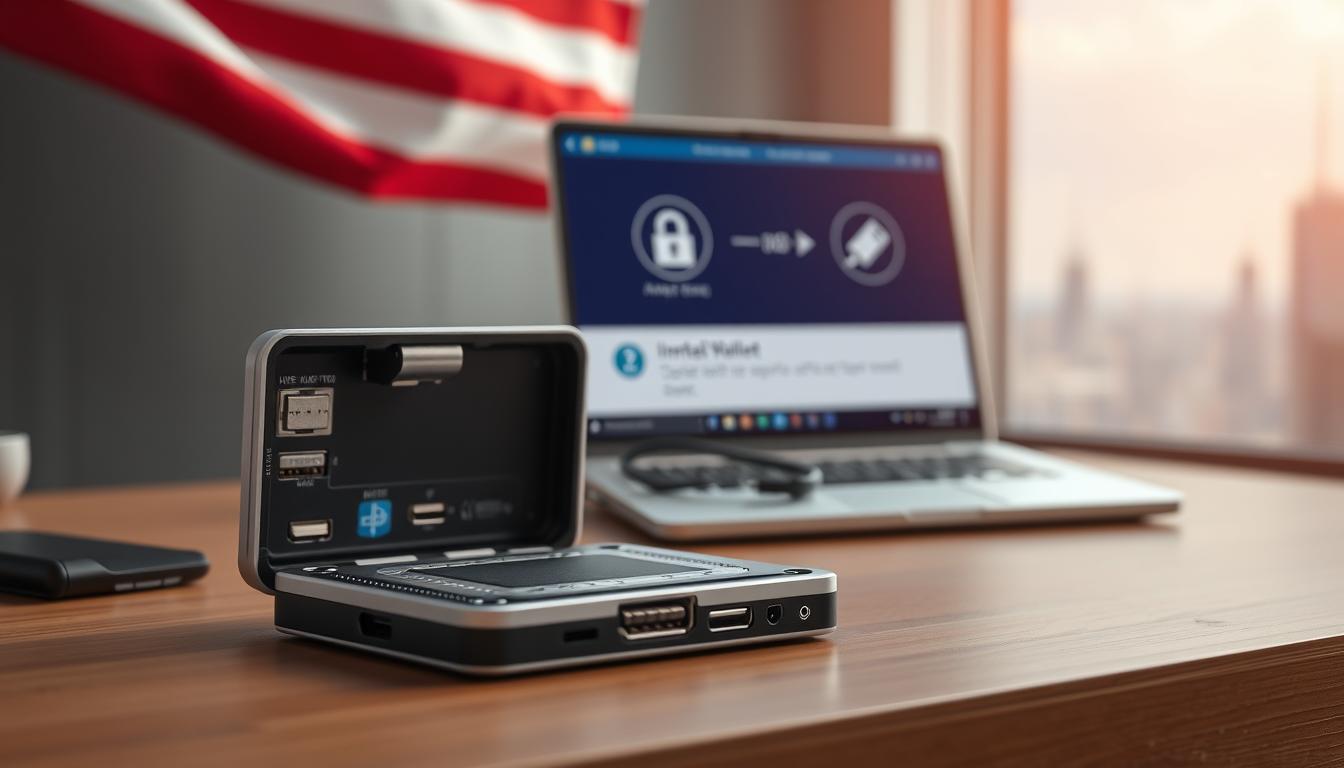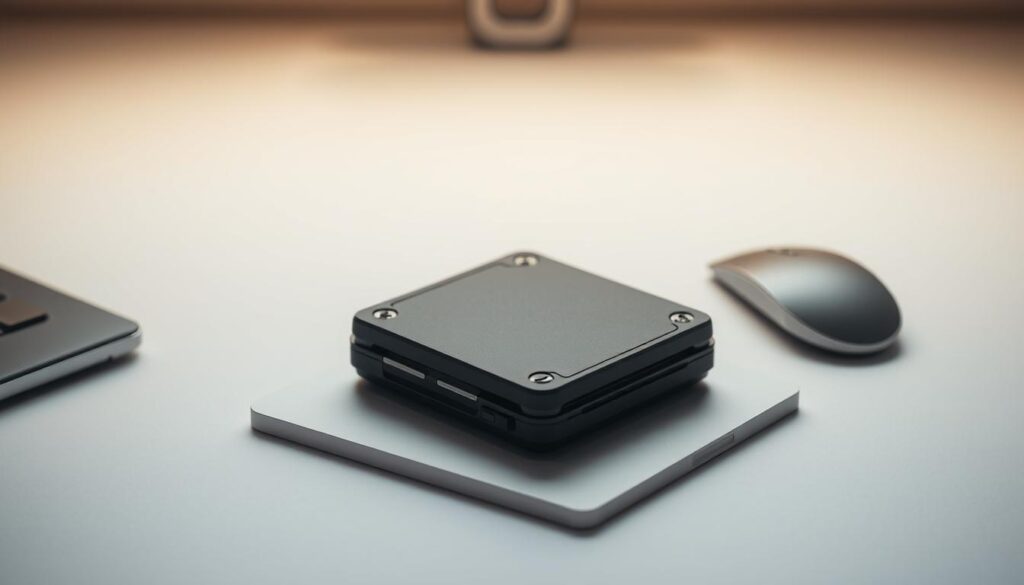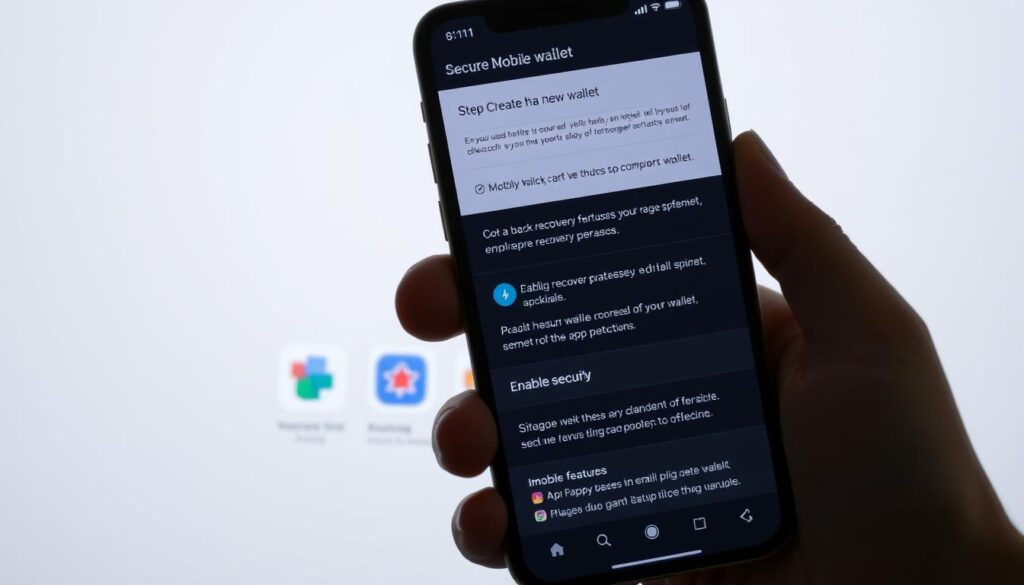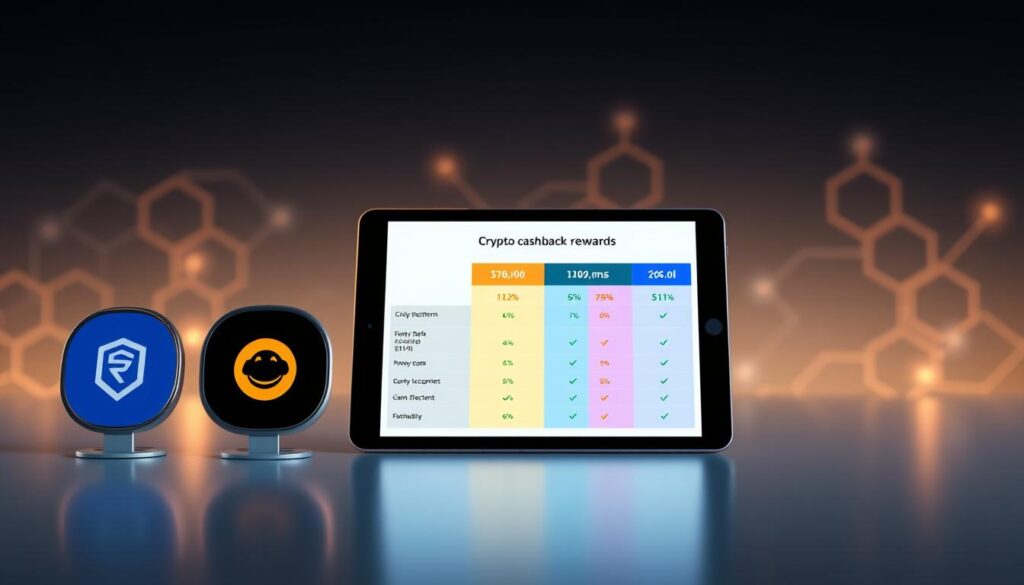Now Reading: Establish a Secure Crypto Wallet in the USA: Step-by-Step
- 01
Establish a Secure Crypto Wallet in the USA: Step-by-Step
Establish a Secure Crypto Wallet in the USA: Step-by-Step

Cryptocurrency is becoming more popular in the United States. To keep your digital assets safe, you need the right wallet. This guide will show you how to set up a secure crypto wallet in the USA. It covers both technical and legal steps to protect your funds from cyber threats.
It’s crucial for every crypto user to follow secure wallet setup steps in the USA. This article will explain hardware wallets, software options, and tax rules from the IRS. You’ll learn how to find a balance between easy access and strong security, all while following U.S. financial laws.
Key Takeaways
- Steps to choose a wallet compliant with U.S. financial laws.
- Methods to prevent hacking through encryption and two-factor authentication.
- Why hardware wallets are recommended for large crypto holdings.
- IRS reporting requirements for U.S. crypto transactions.
- Best practices to update wallet software and monitor for fraud.
Understanding Cryptocurrency Wallets and Their Importance
Cryptocurrency wallets are key to owning crypto, but many don’t grasp the basics. They don’t hold coins in your hand. Instead, they protect digital keys tied to blockchain addresses. These keys are like digital locks: public keys let others send money, and private keys unlock it.
What Is a Cryptocurrency Wallet?
A crypto wallet is a program or device for managing blockchain assets. Public keys are like addresses for receiving money. Private keys prove you own it. Losing your private key means you can’t access your funds anymore, so keeping it safe is crucial.
Why Security Matters for Digital Asset Storage
Security is not just a choice—it’s a must. Crypto transactions can’t be undone. Once money is sent, there’s no going back. Hackers target weak spots like reused passwords or unsecured devices. Every year, millions of dollars are lost because of carelessness.
The Stakes of Crypto Ownership in the Digital Age
The risks are high. In 2023, U.S. users lost over $1.2 billion to crypto thefts, like the $600M Ronin Bridge hack. Even small scams can empty your wallet fast. Setting up your wallet right is not just tech—it’s about keeping your money safe in a risky world.
Different Types of Crypto Wallets Available to US Residents
Choosing the right crypto wallet starts with understanding the types of cryptocurrency wallets available. The USA crypto wallet guide highlights four main categories: hardware, software, mobile, and paper wallets. Each serves unique needs, balancing security, convenience, and accessibility for US users.
- Hardware Wallets: Physical devices like Ledger or Trezor store private keys offline, offering top-tier security. Ideal for long-term holdings.
- Software Wallets: Desktop apps (e.g., Electrum) and web platforms (e.g., MetaMask) provide flexibility but require internet access, posing higher risks.
- Mobile Wallets: Apps like Trust Wallet prioritize portability for everyday transactions but may face malware threats on smartphones.
- Paper Wallets: Printed records of keys offer simplicity but rely on physical security measures.
Custodial wallets, offered by platforms like Coinbase, hold private keys for users but introduce third-party risk. Non-custodial options, like Exodus, let users control their keys, aligning with crypto’s self-sovereignty principles. US users must weigh these choices against exchange compatibility—many platforms now support multiple wallet types for seamless integration.
Security and control define each wallet’s role. Researching the types of cryptocurrency wallets ensures alignment with personal preferences, from hands-off convenience to total asset ownership. The USA crypto wallet guide emphasizes no single option fits all scenarios, urging users to match their needs to the right tool.
Hardware Wallets: The Gold Standard for Security
For US crypto holders, hardware wallets offer hardware wallet security that software can’t match. They keep private keys offline, shielding them from online dangers like hacking. Top brands in the US provide features that meet American standards, ensuring safety and reliability.

Top Hardware Wallet Options for American Users
Ledger, Trezor, and KeepKey are the top choices in the US. Ledger supports over 5,000 cryptocurrencies and has strong anti-tamper features. Trezor Model T has a touchscreen for ease, while KeepKey focuses on simplicity.
Prices range from $60 to $250, offering a balance between cost and security.
Setting Up Your First Hardware Wallet
- Check the device’s authenticity with the security sticker and official documents.
- Create a recovery phrase and keep it safe in a physical place.
- Set a unique PIN and connect to the app (e.g., Ledger Live) for secure hardware wallet setup.
- Move assets to the wallet after setting up network settings.
Backup and Recovery Procedures
Backup best practices include:
- Store recovery phrases in fireproof safes or bank vaults
- Don’t store backup info digitally
- Test recovery with a new device regularly
Regular checks keep you in line with security standards and protect against losing funds. These steps help fight off new cyber threats.
Software Wallets: Balancing Convenience and Protection
Software wallets make it easy to use cryptocurrencies while keeping them safe. Options like MetaMask, Electrum, and Exodus are great for this. They are easy to use but need careful setup to stay secure.
When setting up your cryptocurrency wallet, choose ones that keep your private keys safe on your device. This way, your keys are always with you.
Top software wallets in the US use strong encryption and multi-factor authentication. Windows users might like Exodus for its easy-to-use interface. Meanwhile, macOS users might prefer Trust Wallet.
Stay away from web wallets that store your private keys online. Instead, pick apps that keep your keys safe until you need them.
- Enable two-factor authentication during setup.
- Update the wallet software regularly to patch vulnerabilities.
- Avoid public networks when accessing your wallet.
For cryptocurrency wallet setup on Linux, Sparrow Wallet is a good choice. It’s open-source and transparent. Always use anti-malware tools and a dedicated browser for your wallet.
When using US platforms like Coinbase or Binance.US, make sure to verify API permissions. This helps prevent unauthorized access. Remember, keeping your wallet safe is a mix of the app’s security and your own habits. Always keep your recovery phrase safe, like a physical key—never digital.
How to Set Up a Secure Crypto Wallet in the USA
When setting up a secure cryptocurrency wallet in the United States, following federal and state rules is key. US citizens must go through strict identity checks to use crypto legally and safely. Here’s how to do it:
Verification Requirements for US Citizens
Most sites ask for IDs like driver’s licenses or passports. Banks might also want utility bills to check your address. For instance, CryptoMaximal’s guide shows 85% of US wallets now need multi-step ID checks.
Complying with KYC and AML Regulations
KYC compliance for crypto wallets means proving who you are to stop fraud. AML rules track money to prevent illegal use. Remember, IRS rules now say you must report crypto gains over $600 a year.
Setting Strong Authentication Methods
- Enable Two-Factor Authentication (2FA) using authenticator apps like Google Authenticator
- Store recovery phrases offline in secure physical locations
- Update passwords quarterly using randomized character combinations
California and New York have stricter rules, needing biometric checks for wallets over $3,000. Choose wallets rated “A+” by auditors like Certik or SlowMist for better security.
Mobile Wallet Solutions: Security on the Go
Mobility doesn’t mean you have to give up crypto safety. Secure mobile wallet setup is about finding a balance between easy access and strong protection. Whether you’re traveling in the U.S. or abroad, keeping your crypto wallet security for mobile devices tight is key to avoid unauthorized access.
iOS vs Android Security Considerations
Apple’s iOS is strict about apps, which helps keep out bad ones. Android, on the other hand, is more open but needs careful app checking. Wallets like Trust Wallet (iOS/Android) and Coinbase Wallet (iOS only) use biometric login and PINs for extra security. Always turn on device encryption and two-factor authentication on both.

Protecting Your Mobile Wallet from Malware
- Avoid downloading apps outside official stores to block phishing traps
- Reject excessive permissions requests (e.g., contacts access for a crypto app)
- Regularly update OS and wallet software to patch vulnerabilities
When traveling, turn off Bluetooth and Wi-Fi in public places. Use a trusted VPN when using crypto apps abroad. Also, lock your apps and watch for transaction alerts in real time.
Essential Security Measures for Your Cryptocurrency Holdings
Keeping your wallet security measures up to date is crucial. Even with a secure setup, following essential crypto security practices helps protect your assets. This is especially important in today’s connected world.
Public networks can be risky. Never use unsecured Wi-Fi for transactions. Use a VPN like NordVPN or Surfshark to encrypt your connection. Always turn off automatic network connections in public places.
- Enable address whitelisting to restrict transfers only to verified destinations
- Set transaction limits on exchanges to minimize loss exposure
- Store recovery phrases in fireproof safes, not digital notes
Physical security is key. Don’t talk about your wallet details in public or online. Use biometric authentication and two-factor authentication on all accounts. Check access logs regularly for any unauthorized activity.
Make security a regular part of your crypto routine. Test your emergency recovery plans every year and change passwords every 90 days. Always treat your crypto like you would sensitive financial information—never share private keys via email or messaging apps.
- Monitor blockchain explorers for suspicious activity
- Use hardware wallet firmware updates promptly
- Limit social media exposure of crypto holdings
By following these essential crypto security practices, you create a strong defense. Security is not just a one-time thing. It requires ongoing effort to stay safe in the digital world.
Safeguarding Your Recovery Phrase and Private Keys
Protecting your private key protection and recovery phrases is key to avoiding cryptocurrency loss. Every wallet’s recovery phrase gives full control over your assets. It’s vital to store it safely to prevent financial loss.
Secure Storage Methods for Backup Information
Physical storage options include engraved metal plates, tamper-evident bags, and safety deposit boxes. Legal experts warn against keeping recovery phrases in home safes due to potential third-party access. US residents might choose bank safety deposit boxes, but check local banking rules first.
Never store phrases in digital files. Use offline, tangible formats only.
- Metal plates with corrosion-resistant coatings
- Fireproof safe compartments
- Split storage across multiple locations
The Dangers of Digital Storage of Recovery Phrases
Digital storage is risky. Cloud services like Google Drive or iCloud can be hacked. Saving recovery phrases as email drafts or photos can lead to phishing attacks.
Avoid these risks. Even encrypted files on personal devices can be compromised if stolen or infected with malware.
Using Multi-Signature Security Features
Multisig systems require multiple approvals for transactions, reducing risks. Trezor Suite and Ledger Live support multisig setups, needing at least two keys for transfers. For high-value holdings, this is crucial.
US investors should pair multisig with secure recovery phrase storage for maximum protection without losing access.
Navigating Tax Implications of Crypto Ownership in the United States
Managing crypto assets is more than just setting up a wallet. U.S. residents must also follow crypto tax compliance USA and cryptocurrency reporting requirements. Good tax planning helps you stay legal and protect your investments.

IRS Reporting Requirements for Cryptocurrency Assets
Every transaction with taxable value must be reported. This includes selling, trading, or using crypto to buy things. The IRS sees crypto as property, so you need to report purchase price, sale proceeds, and dates.
Forms like Form 1040 and Schedule 1 are used for income reporting. For complex trades, you might need Form 8949 and Schedule D. Choosing the right wallet is important. Hardware wallets with transaction tracking are easier to use than decentralized exchanges.
Record-Keeping Best Practices for US Crypto Owners
Keep detailed records of all transactions. Use tools like CoinTracking or CryptoTaxCalculator to help. Store records in encrypted files or hardware devices.
Avoid storing recovery phrases online. Physical backups are safer and meet IRS standards.
- Log every trade, gift, or exchange involving crypto
- Save transaction IDs and exchange confirmations
- Update records quarterly to track capital gains/losses
Good record-keeping is key to compliance. It helps avoid penalties and keeps your assets safe. Combining strong wallet security with organized records protects against hackers and audits.
Connecting Your Wallet to Exchanges and Services Securely
When connecting wallets safely, choose exchanges with secure exchange connections and verified APIs. First, create unique API keys for each platform. Also, turn on two-factor authentication during setup. Never give out your keys or private recovery phrases to others.
For mobile apps, use WalletConnect to ensure the QR code is from the official exchange website. Stay away from public Wi-Fi when linking wallets to trading sites. Businesses can use Trezor or Ledger wallets for their advanced API security features, especially for big transactions.
- Enable read-only access for exchanges needing only balance checks.
- Revoke unused API keys monthly via your exchange’s settings menu.
- Verify SSL certificates (HTTPS) on all platforms before initiating connections.
Phishing attacks often target wallet linking. Always check if the domain name is correct. Use only official Chrome Web Store or Firefox Add-ons for browser extensions. Check your wallet’s “connected apps” dashboard often to disable old permissions. For more on picking secure wallets, see this comparison guide.
Common Security Threats and How to Avoid Them
To keep your crypto wallet safe, you need to know about crypto security threats. Cybercriminals are always finding new ways to trick users. Here’s how to spot and avoid the biggest dangers.
Recognizing Phishing Attempts and Scams
Phishing scams look like they’re from trusted sites. They might ask for your private keys or login info. Always check the URL and don’t share your secrets. Look for the “s” in https:// before you enter any info.
- Example: Fake exchange login portals using slight URL variations
- Verify sender emails for typos or unfamiliar domains
- Report suspicious messages to wallet providers
Protecting Against SIM Swapping Attacks
Thieves take over your phone number to get past 2FA. In 2023, over $500,000 was lost to SIM swaps. Use hardware keys like YubiKey or Authy instead of SMS codes.
- Enable 2FA methods excluding SMS (e.g., Google Authenticator)
- Register SIM cards with biometric verification
- Monitor account activity for unauthorized number changes
Maintaining Software Updates and Security Patches
Old software has holes that hackers can exploit. In 2022, a bug in MetaMask exposed private keys. Make sure your wallet and devices auto-update.
- Check for updates weekly using wallet settings
- Install OS patches promptly (iOS/Android security alerts)
- Disable unused features in wallet apps
Your Crypto Security Journey: Next Steps and Ongoing Protection
Keeping your crypto wallet safe is a continuous effort. First, check if your setup follows the best security practices. Make sure to update your passwords, use two-factor authentication, and test your backups. Even with a hardware wallet like Ledger or Trezor, staying alert is crucial for your safety.
Create a personal security plan that fits your crypto needs. Use multi-signature features and physical backups for extra protection. Keep your recovery phrases in a safe place, away from digital notes. Also, sign up for alerts from trusted sources like the U.S. Treasury’s Financial Crimes Enforcement Network (FinCEN) to stay ahead of threats.
Regularly check and update your security measures. As new technologies and tax laws come out, adjust your encryption and records. The IRS needs accurate records for crypto transactions. Use tools like CoinTracker or blockchain explorers to keep logs. If you face a breach, report it to the FBI’s Internet Crime Complaint Center (IC3) and freeze your accounts right away.
By taking ongoing steps to protect your crypto, you keep your assets safe. Learning and being ready to adapt are just as important as setting up your wallet. Stay informed with updates from the CryptoCurrency Security Conference and make sure you have backups in all your security layers. Remember, protecting your crypto is a continuous journey, not just a one-time task.
FAQ
What is a cryptocurrency wallet?
A cryptocurrency wallet is a digital tool. It lets users store, manage, and trade their cryptocurrencies. It holds the private keys, not the assets themselves.
Why is security important when setting up a crypto wallet in the USA?
Security is key because transactions are irreversible. If a wallet is hacked, you could lose your assets forever. Strong security protects your investments from theft and hacking.
What types of crypto wallets are available for US residents?
US residents have many wallet options. These include hardware wallets, software wallets (desktop and web-based), mobile wallets, and paper wallets. Each has its own benefits and security levels.
How can I set up a secure hardware wallet?
First, buy a reputable brand like Ledger or Trezor. Verify the device’s authenticity. Then, follow the manufacturer’s setup guide. Create strong passwords and make secure backups.
What are the best practices for securing a software wallet?
Use wallets with strong encryption. Enable Two-Factor Authentication (2FA). Keep anti-malware software up to date. Also, secure your operating environment.
How do I comply with KYC and AML regulations when setting up a wallet?
You’ll need to provide ID documents and verify your identity. This is to follow Know Your Customer (KYC) and Anti-Money Laundering (AML) rules.
What should I do to protect my recovery phrase and private keys?
Keep your recovery phrase and private keys in a safe place. Use a physical safe or a metal seed storage solution. Avoid digital storage to prevent hacking.
How can I recognize phishing attempts targeting my cryptocurrency wallet?
Phishing tries to trick you with fake emails or messages. Always check URLs and be wary of requests for sensitive info. Watch for grammar errors and unusual domain names.
What are SIM swapping attacks and how can I prevent them?
SIM swapping attacks use your phone number to bypass 2FA. Use authentication methods not based on SMS, like hardware keys or authenticator apps, to prevent this.
What are the tax implications of owning cryptocurrency in the USA?
The IRS views cryptocurrency as property. This means transactions can have tax effects. You must report gains and losses and keep accurate records of all transactions.













